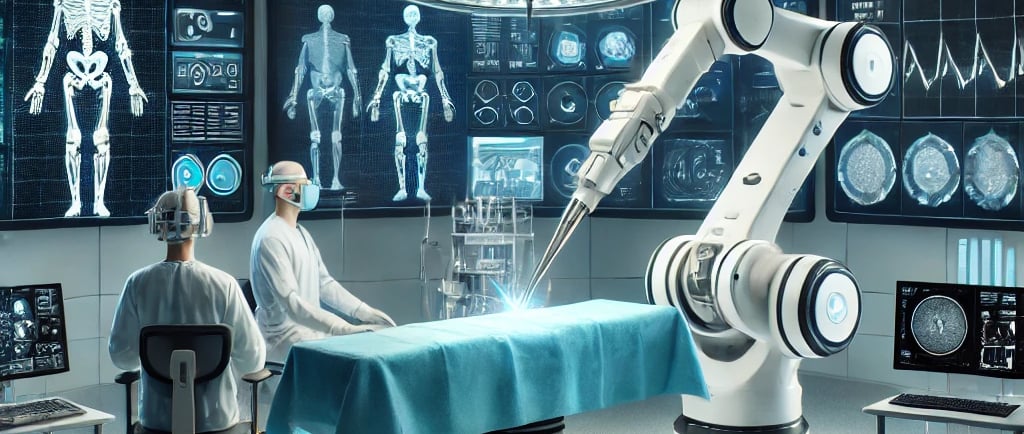The Evolution of Anesthetic Machines: From Ether to AI-Enhanced Systems
Anesthetic machines have undergone remarkable transformations since their inception, evolving from simple devices delivering ether to sophisticated systems utilizing artificial intelligence (AI). This article explores the historical milestones, engineering innovations, design improvements, and pharmacological advancements that have defined anesthetic machines over the years.
medtechoptions.com
4/6/20252 min read


The Era of Ether and Early Innovations
In 1846, Dr. William T.G. Morton introduced ether anesthesia, marking the advent of modern anesthesia. Early machines, such as Morton’s ether inhaler, were rudimentary, lacking precision in dosing and gas delivery.
Engineering Milestones:
Morton’s Ether Inhaler (1846): First public demonstration of inhalational anesthesia.
Clover’s Inhaler (1877): Introduced adjustable valves for better vapor concentration control.
Design Improvements:
Early machines evolved from open-drop methods to semi-closed systems, allowing better control and reduced waste.
The Transition to Modern Anesthetic Machines
By the early 20th century, anesthesia machines became more sophisticated, focusing on safer gas delivery and precise control of anesthetic concentrations.
Engineering Milestones:
Boyles Machine (1917): Allowed for controlled oxygen and nitrous oxide delivery.
Introduction of flowmeters, vaporizers, and breathing circuits significantly improved patient safety.
Pharmacological Improvements:
Development and adoption of safer anesthetic gases (halothane, isoflurane) with predictable pharmacokinetics.
Integration of Safety and Monitoring Systems
The mid-to-late 20th century emphasized safety, with the integration of monitoring devices and alarms to prevent hypoxia and overdosing.
Engineering Milestones:
Oxygen failure alarms and hypoxic guard systems ensuring oxygen supply never drops below safe levels (Katz & Weaver, 1992).
Introduction of electronic vaporizers with precise anesthetic concentration control.
Design Improvements:
Machines became more ergonomic, featuring easy-to-read digital displays, streamlined user interfaces, and integrated patient monitors.
Advancements in Pharmacology and Agent Delivery
Newer anesthetic agents prompted further innovation in anesthetic delivery mechanisms, enhancing the accuracy and predictability of anesthesia.
Pharmacological Improvements:
Introduction of sevoflurane and desflurane, enabling rapid induction and emergence.
Enhanced vaporizer technology allowed precise dosing and minimized environmental contamination.
The Advent of AI and Automation
Today's anesthetic machines are highly advanced, utilizing AI and automation for precision anesthesia delivery and enhanced patient safety.
Engineering Milestones:
Automated control systems such as closed-loop anesthesia delivery systems adjust anesthetic dosing based on real-time patient feedback (Liu et al., 2020).
AI-driven predictive monitoring, anticipating patient responses and adjusting anesthetic levels accordingly.
Design Improvements:
Smart interfaces with intuitive, automated workflows reducing clinician workload and minimizing human error.
Wireless connectivity allowing integration with hospital information systems for seamless data transfer.
Current and Future Trends
The ongoing evolution includes further AI integration, predictive analytics for patient safety, and increasingly sustainable anesthetic practices.
Engineering Milestones:
Continuous advancements in automated decision-support systems.
Development of more eco-friendly anesthetic delivery methods, reducing greenhouse gas emissions.
Conclusion
From primitive ether inhalers to AI-powered systems, anesthetic machines have dramatically evolved, combining engineering excellence, user-centered design, and pharmacological advancements to revolutionize patient safety and surgical outcomes. As technology advances, anesthetic machines will continue to be pivotal in shaping the future of anesthesia care.
References
Katz, J. D., & Weaver, J. M. (1992). Anesthesia Equipment: Principles and Applications. Mosby-Year Book.
Liu, N., Chazot, T., Genty, A., Landais, A., Restoux, A., McGee, K., & Laloë, P. A. (2020). Closed-loop coadministration of propofol and remifentanil guided by bispectral index: a randomized multicenter study. Anesthesia & Analgesia, 131(1), 82-92.
Dorsch, J. A., & Dorsch, S. E. (2012). Understanding Anesthesia Equipment. Lippincott Williams & Wilkins.
